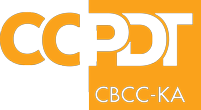1. Understand what is available to your dog; group classes, private lessons, etc.
What works best for you and your dog? If you feel you have problems with your dog that are outside the scope of a class, you may benefit from some one-on-one private lessons. We can easily answer this for you when you call to sign up for classes. However, to build a dog’s social skills, a group class is a great idea! You can also do a combination of both.
2. Use food in your training
Treats are almost more important than your leash. Treats are your dog’s paycheck for learning new behaviors and performing those behaviors time after time, with or without distractions. Treats help bond the two of you in training and learning and they are the only way to ensure that your dog will listen when you first start training, even if a leash isn’t attached to him. Of course, the best kind of treats are healthy, all natural treats with nutritional value. And remember, even a well-trained dog likes to get told he did the right thing.
3. We feel there are certain behaviors necessary to teach your dog. Here are some of those and here are some info on how and when to use them.
The basics are “sit”, “lie-down”, “stay”, “come”and “walking without pulling”.
A good training class or method also teaches “controlled greetings” and “leave-it” which we believe to be essential! Making sure that you use behaviors taught in a class or by a trainer or DVD in your every day communication with your dog, will help ensure that your dog continues to have “manners”. Dog’s are not born with manners. If you want your dog to have manners or boundaries, you will have to teach him. Here are some examples of "good manners":
Having your dog sit at the door before going out...
Having your dog lay quietly on his mat while you are fixing his food...
Having your dog(s) ask permission by offering a “sit” before being pet or jumping up on the couch with you...
4. Make short term and long term goals for your dog training.
If your primary goal is to have a dog that is well behaved and learns to “come” when called, that's a great goal. But once you start your training, you may have greater goals, like agility competitions, formal obedience, or Rally Obedience. So your short term goal is a well behaved dog, your long term goal is...fill in the blank. Any training is good training so when people ask me what class would be next for their dog (after basic obedience), I usually say, pick a class time that works for them and take that class. I can say at It’s PAWSible! that every class is a good one and you and your dog will learn something useful. If you are thinking about agility, an excellent understanding and proofing of the basics is essential. Especially “coming when called” and “stay”.
5. Find a treat that your dog loves! And always be prepared to “step it up”.
Some people tell us that their dog is too food motivated. I say: “no way”. A food motivated dog is the easiest dog to train. What is much more difficult is working with a dog that doesn’t like treats. When someone tells me that their dog isn’t crazy about food, I first ask: “What have you tried?”. Most of the time, it’s commercial dog food or treats. I then ask: “Have you ever tried real meat, like roast beef or turkey?” Usually they have not. Most dogs will not refuse real meat.
In a class situation, you MAY need to use something that is that high value to get your dog to perform. Remember the distractions will be much tougher in class than at home.
6. Train smart by having your tools accessible to you.
1. Healthy, all-natural training treats
2. A good quality treat bag to carry the treats that you can hang from your belt or put in your pocket. I have several of these so that whenever I need one, I can find one.
3. The right combination of leashes and collars.
4. Sometimes a training bag is great so you can carry all of that and perhaps a portable easy to carry dog bed to so your dog can lay quietly by your side.
5. The right instruction: That’s where we come in.
6. A motivated person (that’s you) and a hungry dog!
7. Know what commands or performances you should reinforce every time or at least randomly:
1) good performance of basic commands,
2) when your dog comes when called (if this is was a problem behavior, ALWAYS reward this one)
3) when your dog does something brilliant like choosing not to jump on your counters!
When figuring out what and when to reward, consider rewarding approximations of good behaviors. Remember that your dog is learning just like you! With your enthusiasm, praise and treats, they will learn.
8. Know the very first “command” to teach your dog.
Your dog’s name!!! This is the most important word your dog should know and love! Teach your dog his or her name by placing containers of treats around your house where your dog can’t get them. Over the course of the day, say your dog’s name several times, and every! time he looks at you, give him a treat! If you do this for several days, you will find your dog has an instant “head turn” towards you when you say his name. This is beneficial for every command, but especially for teaching your dog to come every time you call him!
9. Speak Dog at first, then English as a second language.
Dogs speak dog. However, they definitely learn the meaning of some words and phrases. Use this to your advantage. To teach your dog to come when called or to help your dog view you as “the giver of all good things”, repeat these and other fun phrases: “Want to go for a walk?” “Are you hungry?” “Want to go for a ride?” “Are you ready?” After your dog hears these questions routinely, you’ll see an enthusiasm that you will love!
10. Learn how to keep your dog from being too mouthy with the treats.
If your dog jumps up to get the treat while teaching “sit”, don’t keep pulling the treat away, it will only make him try harder and it will cause your dog to bite your finger. When you feel teeth, don’t panic and try to allow the feel of his teeth. Be patient, your dog will learn that your fingers begin where the treat ends. You can also try saying “easy” or “gentle” whenever you give a treat. Wait until you feel your dog licking your fingers before you let him have it. Try putting your treats in a fist rather than two fingers at first. That will also help.
11. Know how often you need to train for a “new behavior” to stick?
When teaching a new behavior or practicing newly learned commands, repeat successful performances about 5 times per session. However, be careful not to drill your dog. Keep your sessions to 5 minutes or less. Repetition is more important than length of session, so that it is always seen as fun, not stressful.
12. Know everything you can about how to help your dog understand.
The most important skill you can have when training your dog is patience. Remain quiet and calm while your dog is learning a new behavior. When he gets it, “throw a party, a BIG party!” with lots of great treats and praise! Also, keep your commands calm and quiet. A command given once in a firm but normal tone of voice is best.





